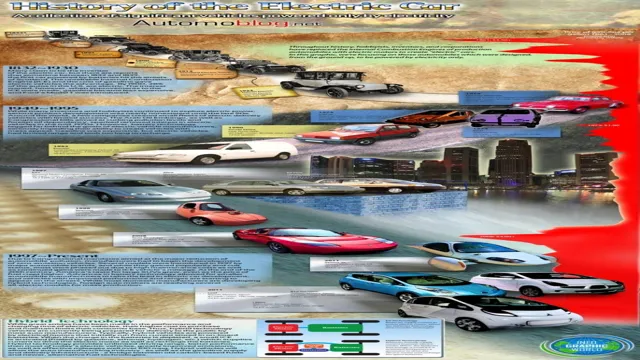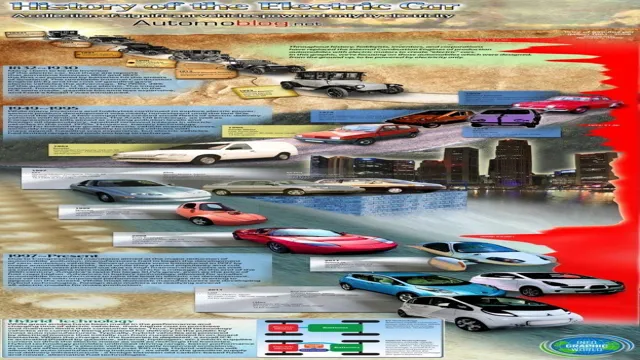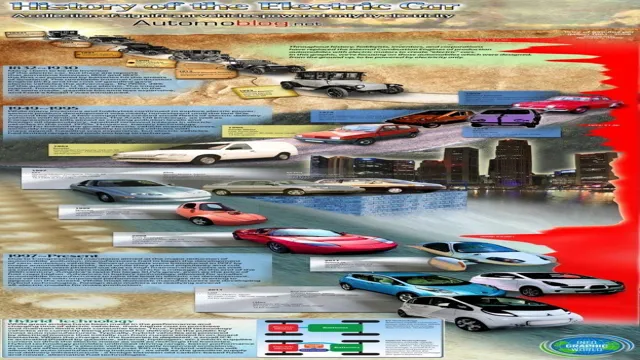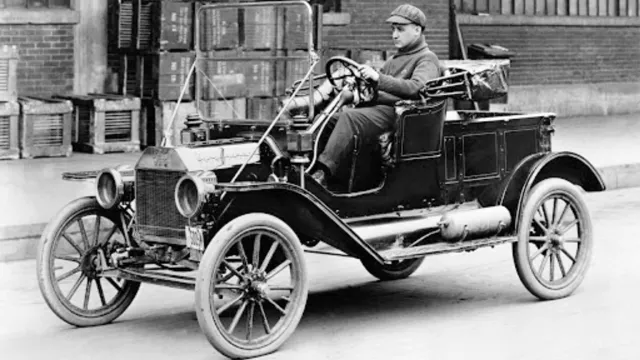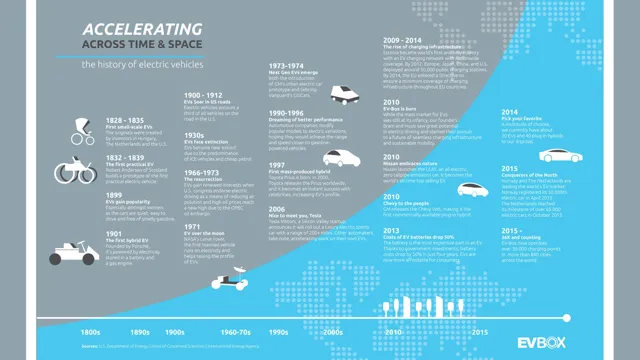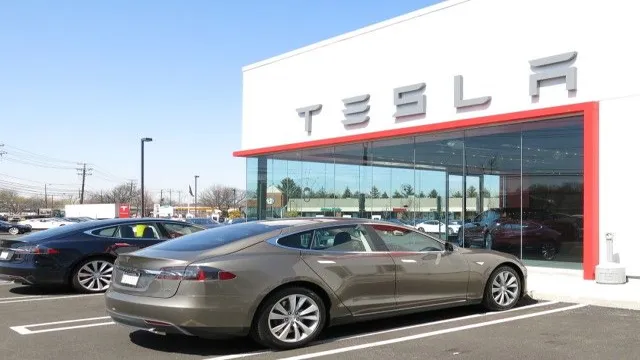The Shocking History of Electric Cars: From Prominence to Obscurity in the 20th Century
In the early 20th century, electric cars were the future of transportation, promising a cleaner and more efficient way of traveling. However, their rise was short-lived, and they quickly fell out of favor in the industry. Why did electric cars take a backseat to gas-powered ones, and what led to their resurgence in the 21st century? This blog will explore the turbulent history of electric cars and their journey from obscurity to mainstream popularity.
Strap in, and let’s take a ride through memory lane to explore the rise and fall of electric cars in the 20th century.
Introduction
Electric cars have been around for longer than most people realize. In fact, the rise and fall of electric cars in the 20th century was a fascinating interplay of technological innovation, political factors, and consumer preferences. While electric vehicles were popular in the early 1900s, they faced a major setback when gasoline became more affordable and readily available.
However, in recent years, the tide has turned again. With advancements in battery technology and increasing concerns about climate change, electric cars are once again becoming a viable option for drivers. As we look towards the future, it will be interesting to see how electric cars continue to evolve and what changes they will bring to the automobile industry as a whole.
Early Beginnings of Electric Cars with EV1 in the 1990s
Electric Cars, EV1, 1990s Electric cars, or EVs as they are commonly known, have been around since the 19th century, but it was not until the 1990s that they started to become more mainstream. General Motors led the way in the early days with the introduction of the EV1 in 199 The EV1 was designed to be a practical and affordable electric car that could be used as an alternative to traditional gasoline-powered cars.
It boasted an impressive range of up to 140 miles on a single charge and had a top speed of 80 mph. Unfortunately, the EV1 was short-lived, and only a few hundred were ever produced. However, it set the stage for the development of newer and more efficient electric cars that we have today.
The EV1 served as a reminder that electric cars were a viable option for transportation and that they could be a part of a greener, more sustainable future.
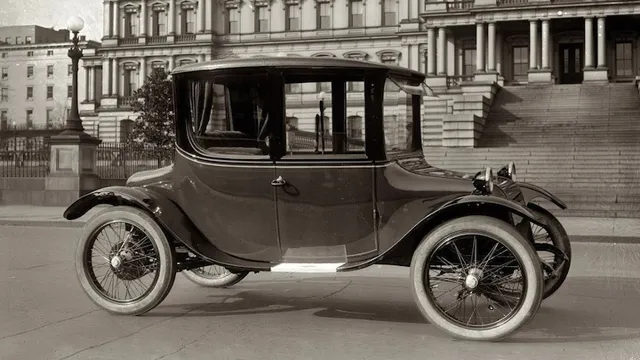
How the EV1 Failure Impacted Electric Car Development
The failure of the EV1, also known as the General Motors (GM) electric car, had a significant impact on the electric car industry. When GM introduced the EV1 in 1996, it was hailed as a breakthrough for electric cars and a step towards a more sustainable future. However, the EV1 was discontinued in 2003, and all leased vehicles were repossessed and destroyed, which left many people wondering what went wrong.
The main reason for the failure of the EV1 was due to limited market appeal, inadequate battery technology, and lack of support from GM. The company failed to see the long-term potential of electric cars, and instead, shifted their focus to gas-guzzling vehicles, which had a detrimental effect on the development of electric cars for many years to come. However, the failure of the EV1 did not deter other companies from pursuing electric car development, and in fact, it spurred some companies to invest more in this technology.
This failure served as a valuable lesson for the industry, and today, electric cars are more popular than ever before, with more advanced features and technologies that make them more accessible and appealing to consumers.
Revival of Electric Cars in the 21st Century
Electric cars were first introduced in the late 19th century, but their popularity began to wane due to a lack of charging infrastructure and advancements in gasoline-powered cars. By the mid-20th century, electric cars had largely disappeared from public roads. However, in recent years, concerns about the environment and climate change have prompted a renewed focus on electric vehicles.
Today’s electric cars are more efficient, stylish, and affordable than their predecessors, and advancements in battery technology have allowed them to travel longer distances on a single charge. With a growing network of charging stations and incentives offered by governments around the world, the revival of electric cars in the 21st century shows no signs of slowing down. The rise and fall of electric cars in the 20th century taught us valuable lessons, and we are now better equipped to make them a viable and sustainable mode of transportation for the future.
Tesla’s Success with the Model S and Model X
Electric cars have seen a revival in the 21st century, and Tesla has emerged as the leader in this industry. Their Model S and Model X have been hugely successful, primarily due to their exceptional efficiency and performance. The Model S can go from zero to 60 miles per hour in a matter of seconds and has a range of over 300 miles on a single charge.
The Model X is the world’s first electric SUV and comes equipped with falcon-wing doors, which adds to its unique appeal. Tesla has also focused on making charging convenient for its customers. They have built an extensive network of Supercharger stations around the world, which allows drivers to charge their vehicles quickly.
As a result, Tesla’s sales have continued to rise, and they have become a household name in the electric vehicle market. The success of Tesla and their electric vehicles has demonstrated the potential for a greener future, where transportation can be both environmentally friendly and enjoyable.
Government Policies and Incentives Supporting Electric Cars
Electric Cars In recent years, the world has seen a significant increase in the use of electric cars, and with the help of government policies and incentives, this trend is expected to continue. These policies range from tax breaks and rebates to subsidies and grants. Governments across the world are taking steps to encourage the use of electric cars as they are more environmentally friendly and reduce the carbon footprint.
The availability of charging stations and the development of battery technology have also boosted the popularity of electric vehicles. Additionally, rising fuel prices and concerns over the limited availability of fossil fuels have further fueled the use of electric cars in the 21st century. With these government policies and incentives, it is clear that electric cars are set to revolutionize the way people think about transportation.
Growth and Competition in the Electric Car Market
The growth and competition in the electric car market has been a topic of discussion in recent times, with many factors contributing to its revival in the 21st century. Electric cars have made significant advancements since their initial introduction as environmentally friendly alternatives to conventional petrol-fueled vehicles. Technological developments have enhanced battery life, reducing range anxiety for drivers, and making electric cars more practical for long-distance travel.
Additionally, governments are providing incentives for drivers, encouraging them to switch to electric cars, thereby reducing carbon emissions and promoting sustainability. The competition between electric car manufacturers has also increased, with companies like Tesla leading the way by creating sleek, fast, and efficient electric cars that can rival their petrol-powered counterparts. As more companies enter the market, there will be an increase in innovation and more affordable options, making electric cars more accessible to the general public.
In conclusion, the growth of the electric car market shows no sign of slowing down, as it transitions from a niche market to a mainstream industry, shaping the future of transportation.
Challenges for Electric Cars Today
The rise and fall of electric cars in the 20th century is a fascinating story that reveals many of the challenges that electric vehicles face today. In the early days of automobile manufacturing, electric cars were actually quite popular. They were quiet, clean, and easy to operate.
However, the invention of the internal combustion engine changed the game, and gasoline-powered cars quickly became the norm. Electric cars fell out of favor because they had limited range and took a long time to recharge. Despite these drawbacks, electric cars continued to be developed, and today, they are becoming more and more popular again.
However, one of the biggest challenges that electric cars face today is the lack of charging infrastructure. There simply aren’t enough charging stations in most areas to make electric cars a truly viable option for most people. Additionally, the cost of electric cars is still quite high, and many people don’t have the financial means to purchase them outright.
While these challenges are significant, they are not insurmountable, and with continued investment and innovation, the future looks bright for electric cars.
Limited Charging Infrastructure and Range Anxiety
Electric cars have come a long way in recent years, but one major challenge that still remains is the limited charging infrastructure and range anxiety. While the number of charging stations has increased, they are still not as widespread as gas stations, making it challenging for electric vehicle drivers to plan longer trips. Additionally, the fear of running out of battery and getting stranded on the side of the road can be quite overwhelming.
As a result, range anxiety is a real issue for many people considering switching to an electric car. While technology is advancing rapidly, and battery ranges are increasing, this challenge will continue to exist until we have enough charging infrastructure to make electric cars a more viable option for everyone. Despite these challenges, electric cars do offer a lot of benefits, including reduced emissions and lower fuel costs, making them an attractive option for those looking to live a more sustainable lifestyle.
Higher Cost and Limited Practicality for Some Drivers
Electric cars, Challenges, Higher cost, Limited practicality Despite the increasing popularity of electric cars in recent years, there are still some challenges that they face. One of the main challenges is the higher cost of electric cars compared to traditional gas-powered vehicles. Although the cost is decreasing gradually, it’s still a deterrent for some people.
Another challenge is the limited practicality of electric cars, especially when it comes to long-distance travel or areas where charging stations are scarce. For example, if you live in an apartment complex with limited parking, it may be difficult to charge your electric car overnight. While these challenges may discourage some people from making the switch to electric cars, it’s worth recognizing that technology is constantly improving, and these issues will likely be addressed in time.
Despite the challenges, electric cars remain a promising solution to reducing our carbon footprint and creating a cleaner environment for future generations.
Conclusion and Future of Electric Cars
In the 20th century, electric cars had a tumultuous journey marked by initial success, followed by a sudden decline. Despite being heralded as the future of transportation, they faced numerous obstacles, from limited range to lack of infrastructure, and struggled to compete with gasoline-powered vehicles. However, as we enter the 21st century, electric cars are once again on the rise, thanks to advancements in technology, government incentives, and growing environmental concerns.
With the rise of Tesla, Nissan Leaf, and other electric car models, we may yet witness a new era of sustainable transportation. In summary, the rise and fall of electric cars in the 20th century serves as a reminder that nothing in life is predictable, and progress is rarely linear. But perhaps it is precisely this unpredictability that makes the journey towards a cleaner, greener future all the more exciting and worthwhile.
After all, as the saying goes, “The best way to predict the future is to invent it.”
FAQs
What was the main reason for the decline of electric cars in the 20th century?
The lack of infrastructure for charging and battery technology limitations were the main reasons leading to the decline of electric cars in the 20th century.
Were electric cars popular during any period of the 20th century?
Yes, electric cars were quite popular during the early 1900s, with some cities having electric taxi fleets.
Did any electric car manufacturers survive the decline in the 20th century?
Yes, hybrid electric cars made a comeback in the late 1990s/early 2000s, and some electric car manufacturers from the early 20th century, like Baker Electric, were revived as well.
What advancements in battery technology led to the revival of electric cars?
The development of lithium-ion batteries in the 1990s led to significant improvements in battery range and performance, allowing for the creation of more practical electric cars.
